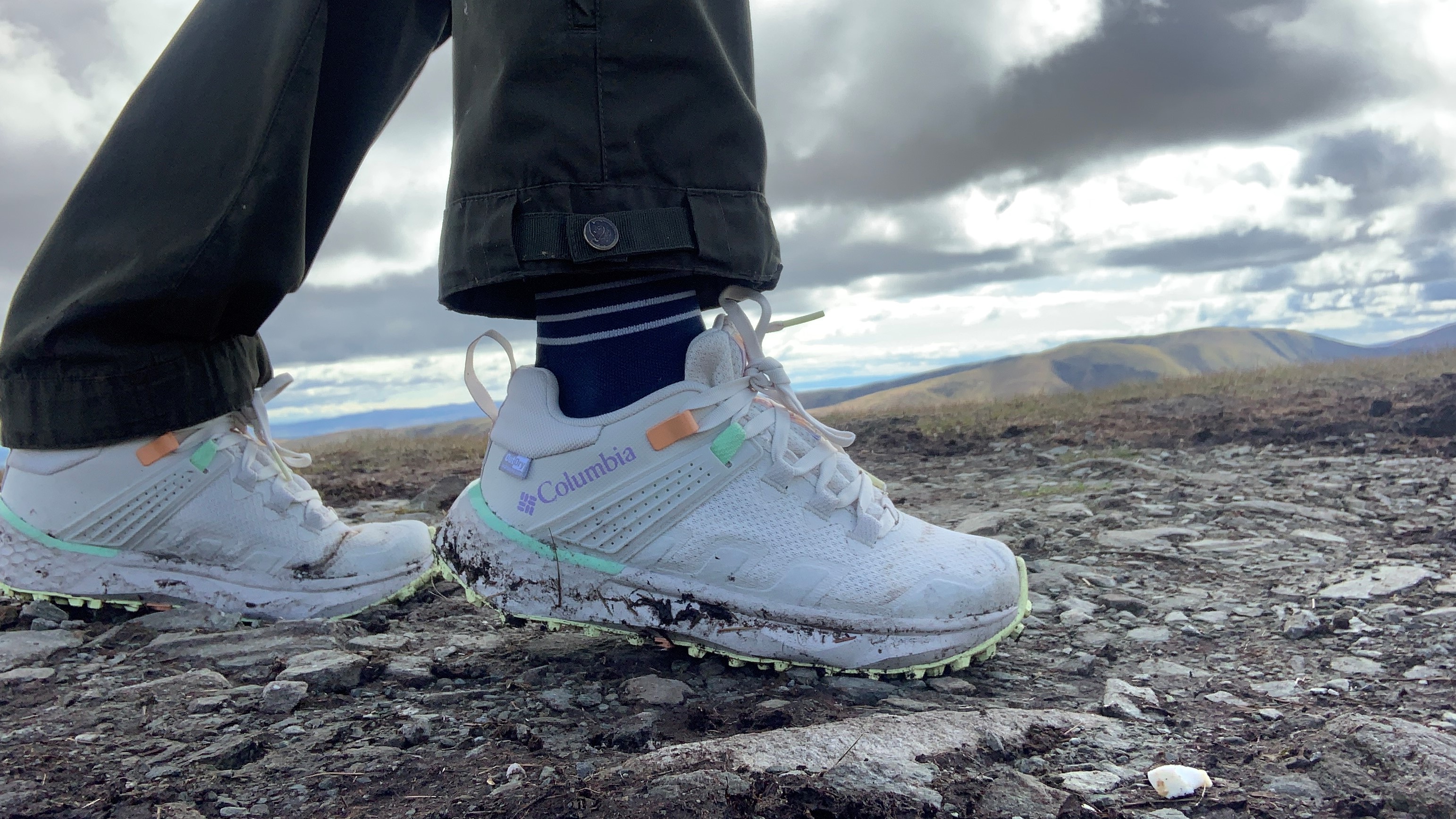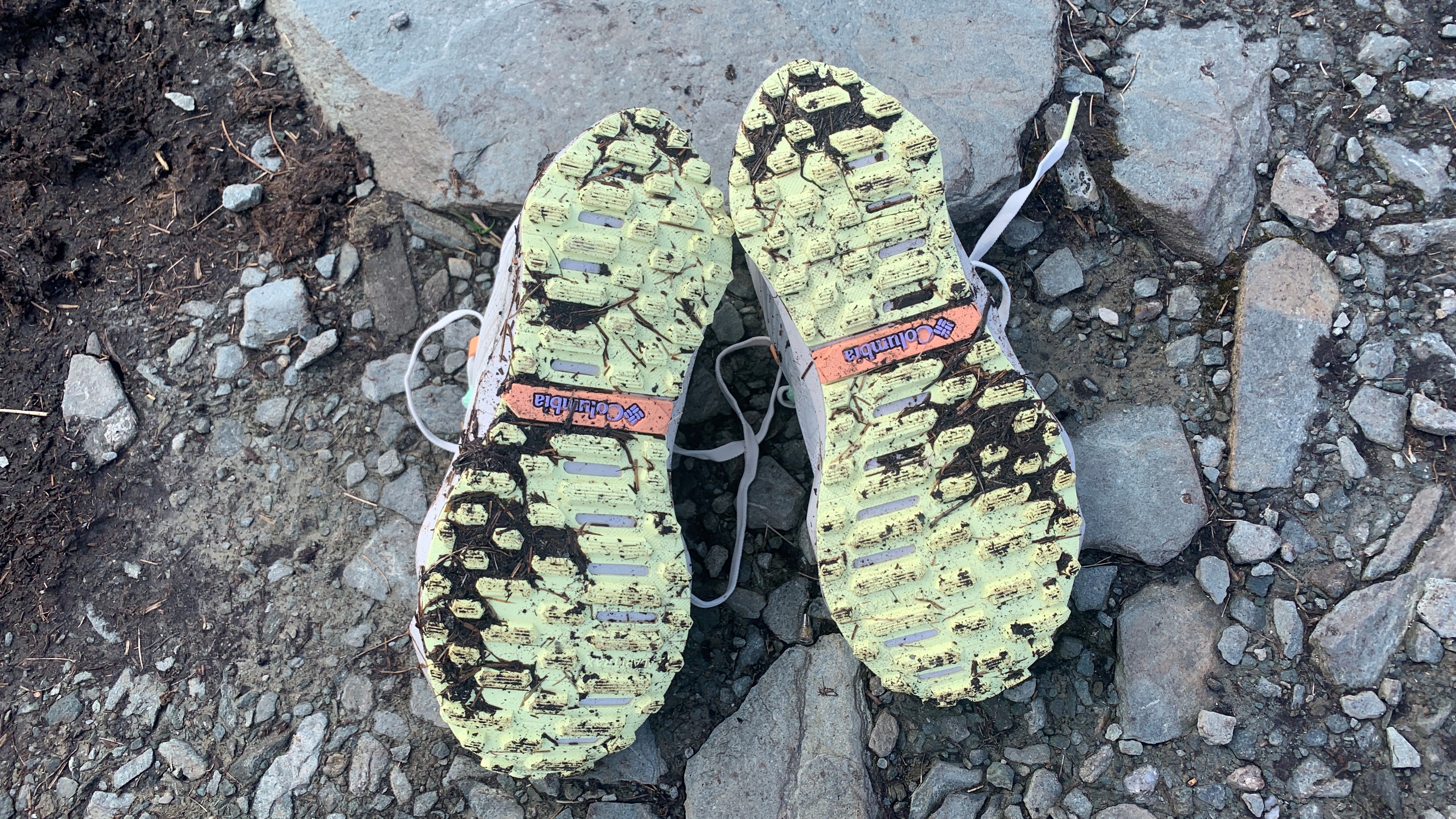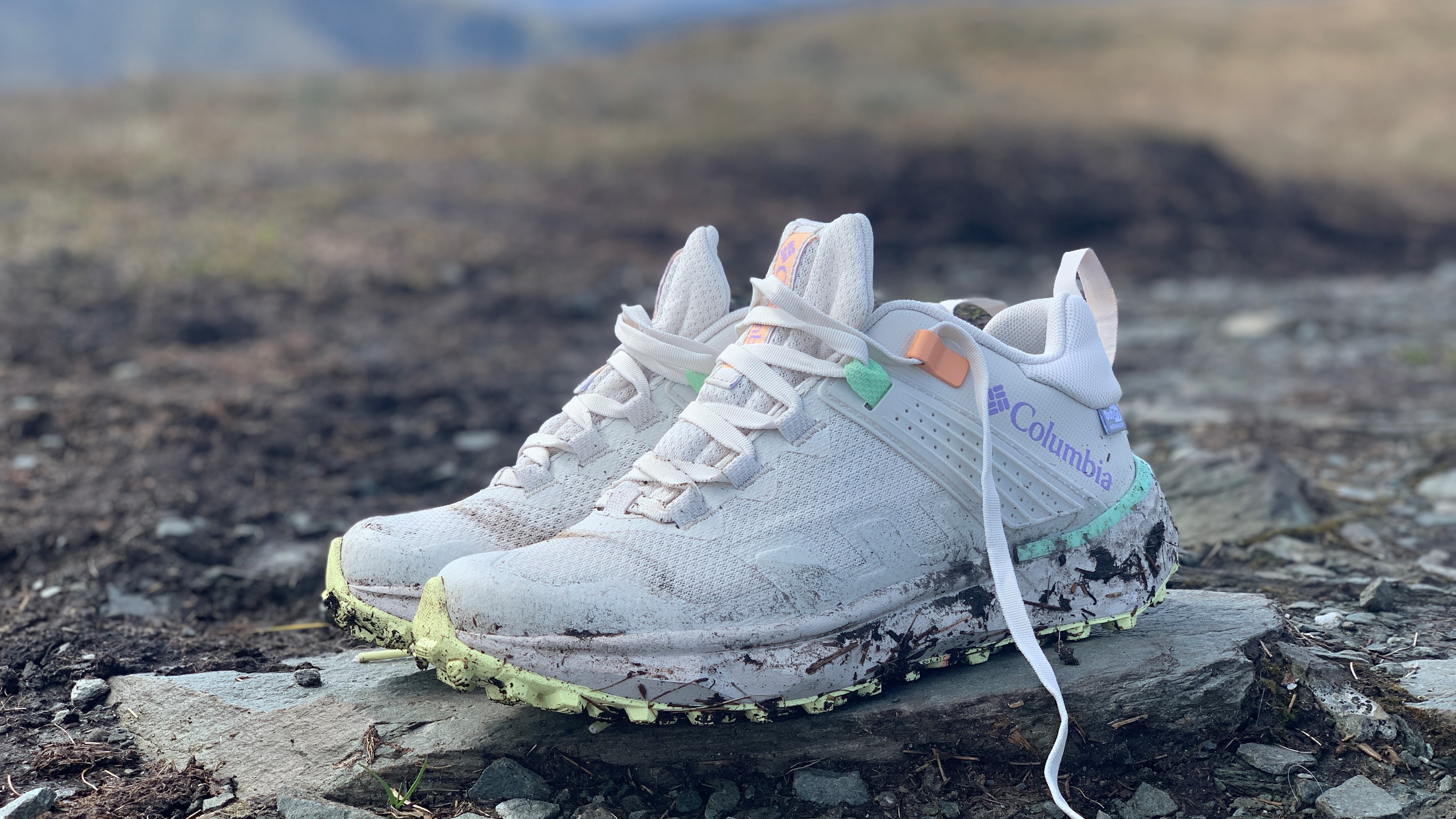Advnture Verdict
These aren’t the most comfortable hiking shoes we’ve worn, but they offer good waterproofing, toe protection and grip on a steep climb
Pros
- +
Lightweight
- +
Waterproof
- +
Grippy outsoles
- +
Solid uppers give good protection
Cons
- -
Not very breathable
- -
Not the most comfortable shoes
- -
Poor heel lockdown
- -
Not the roomiest toe box
You can trust Advnture
Columbia Facet 75 Outdry Waterproof hiking shoes: first impressions
In the Facet 75, Columbia has built a hiking shoe that’s styled for urban sensibilities, but handles surprisingly well on steep slopes and muddy, boggy conditions. At first glance, these shoes appear to be chunky trainers with a rocker sole, but when you pull them on, you’ll realize they’re much sturdier than they appear. Durable mesh uppers offer good protection against rocky soles while the Adapt Trax outsole gives more grip on a muddy slope than you might expect. The waterproofing works well, so long as you don’t sink in above your ankle, and even keeps the uppers from appearing too dirty after a boggy hike.
• List price: $130 / £125
• Gender specification: Men’s and women’s available
• Sizes: Men’s 7 - 15 (US), 6 - 14 (UK) / Women’s 5 - 12 (US), 3 - 10 (UK)
• Weight (per shoe): 320g/ 11.2oz (women’s UK 4)
• Materials: Waterproof mesh upper, Techlite™ PLUSH midsole, OrthoLite® Eco insole, rubber outsole
• Colors: Light Sand, Frosted Purple, Nori, Black
• Best use: Hiking
These shoes aren’t as technical as a trail running shoe for moving fast, and we found that we wanted more room in the toe box and a snugger fit around the heel. The sturdy uppers meant that out of the box, they hurt a little around the ankle bone, but after a few wears they become more comfortable. The waterproofing and grippy soles makes them adequate for inclines and boggy conditions, but we’d be more likely to save them for gentler trails. If you’re looking for a versatile shoe that you can wear around town and offers protection against rain, bogs and rocks on the trail, try these on for size.
Columbia Facet 75 Outdry Waterproof hiking shoes: in the field

I was a little skeptical about these hiking shoes, in part because they look more urban than I’d really like for a hike, but mostly because I found them a little uncomfortable out of the box. After wearing them around town a few times, I recently got them out for a few hikes around Loch Lomond to see if they could really hold up against steep slopes, mud and bogs. While they aren’t the comfiest hiking shoes I’ve ever met, I found them to be surprisingly capable.
Here’s how they performed:
Sizing
Columbia suggests these run large. I am technically a 3.5 but tend to wear a size 4 in hiking shoes to give my room feet to swell. I didn’t have tons of room in these, and in fact when I was wearing thick hiking socks they were too tight, so I think they run a little small.
Fit and comfort
It was the fit that I had the most issues with. They cut right at the bottom of my ankle bones, and because the uppers are so sturdy they were a little uncomfortable to wear. I also found that, even though I don’t have wide feet, I didn’t have as much room in the toe box as I’d like, and my heel was moving around quite a bit. For the uphill, this was ok, but on a long, steep descent, my toes were bashing into the ends. I don’t have any blisters and was able to wear these over a seven mile hike, even though I carried backup shoes in my backpack, but I’ve definitely worn much more comfortable hiking shoes.

Waterproofing and breathability
I deliberately wore these on a hike that I know is always boggy because I wanted to test their waterproofing capabilities, and also because they came in a gleaming shade of white, which I find an odd choice for a shoe that’s obviously going to get dirty. The waterproofing works great, as long as you don’t go deep enough for it to come in over your ankle, and it actually has the added benefit of making sure that any muddy water rolls off the outers, keeping them looking alright. After a long hike, they didn’t look shiny anymore, but they’re still pretty white.
All the latest inspiration, tips and guides to help you plan your next Advnture!
Because they’re waterproof shoes, they’re not the most breathable. It was a warm day and my feet felt fairly sweaty, but then again not more than in most waterproof shoes on a warm day. Because they’re more of a trainer style shoe, I think I’d theoretically be more likely to wear them for mellower walks and therefore would probably rather trade the waterproofing for more breathability.
Weight
These shoes are definitely among the lightest hiking shoes I’ve worn, which could make them a good choice for a longer trek. They’re not super technical for trail running, but if you’re taking off on a long distance trail, the combination of light weight and sturdiness might be appealing.

Grip and protection
Somehow, the soles don’t look as grippy as they really are. I found the rubber outsole and 5mm lugs worked well on steep grassy slopes and muddy sections. The uppers are also tough enough to protect against rocks and tree roots, too.
Julia Clarke is a staff writer for Advnture.com and the author of the book Restorative Yoga for Beginners. She loves to explore mountains on foot, bike, skis and belay and then recover on the the yoga mat. Julia graduated with a degree in journalism in 2004 and spent eight years working as a radio presenter in Kansas City, Vermont, Boston and New York City before discovering the joys of the Rocky Mountains. She then detoured west to Colorado and enjoyed 11 years teaching yoga in Vail before returning to her hometown of Glasgow, Scotland in 2020 to focus on family and writing.


